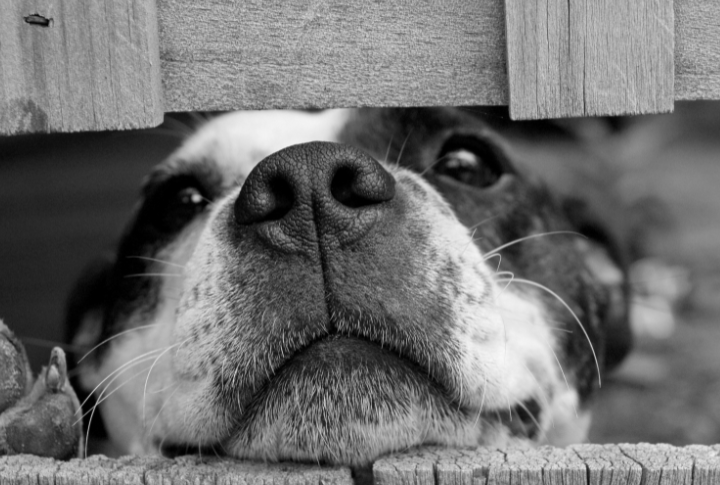15 Telltale Signs of a Shady Dog Adoption

Did you know tricky dog adoption deals have been on the rise? According to the BBB, thousands of dog lovers fall for these bad deals every year. Before you click “adopt,” check out these 15 clues to save you from getting tricked or feeling sad over a sneaky dog adoption deal.
Unrealistic Prices

When you see a purebred dog listed for an unusually low price, alarm bells should ring. These tricky deals use bait like this to lure in buyers. In reality, most purebreds cost a lot more. Before you get attached, compare the price to other adoption listings.
No In-Person Meeting

Legit rescues always want to meet you and make sure their dogs are going to good homes. If the seller pushes to complete everything online and dodges face-to-face interactions, that’s a red flag. Real dog adoptions involve meeting the dog and ensuring you’re a fit.
Payment Via Wire Transfers or Gift Cards

If the payment method feels sketchy, take a step back. Schemers will often request payments through untraceable methods like wire transfers or gift cards. Real rescues typically use secure payment systems or accept payments in person.
No Adoption Screening Process

Adopting a dog isn’t like buying a gadget online. Real rescues want to ensure their dogs are going to good homes. You’re probably dealing with a rip-off if there’s no application, home visit, or background check. Tricksters don’t care who you are; they just want your money.
High Pressure Tactics

They love rushing you to make decisions and will claim the dog is in high demand and might be gone by tomorrow unless you act fast. Genuine rescues care about finding the right match, not making a quick sale. If you feel pressured to act fast, it’s a sign to walk away.
Poorly Written Ads

Look closely at the listing. Does it have odd grammar or feel overly vague? Many tricky ads are rushed and poorly written because they copy and paste them from other sources. A legitimate rescue usually takes time to craft a thoughtful post about the dog’s personality and needs.
Seller Won’t Share Detailed Info

If the seller avoids answering your questions about the dog’s health, breed, or history, it’s a major warning. Legitimate rescues are open books and are happy to provide details. They keep it vague on purpose. Push for specifics; it’s a red flag if they can’t provide them.
Photos or Low-Quality Images

Photos tell you a lot about the dog’s environment. Schemers often use stock images or blurry, low-quality pictures to disguise their deceit. Ask for more photos, especially ones that show the dog in a recognizable setting. If they refuse or offer excuses, it’s likely a scheme.
Adoption Process Feels Too Easy

Rescuing a dog is never a “click-and-go” process. If you don’t have to fill out paperwork, answer questions, or sign any contracts, something’s off. Actual rescues take steps to make sure the adoption is a good fit for both the dog and the family.
No Verified Contact Information

Seek out a physical address, phone number, or email that’s easy to verify. Some rescues use fake contact info or make it nearly impossible to trace them. Always check the rescue’s website, social media, and online reviews to see if it’s legitimate.
Emotional Manipulation

Some of them play on your emotions, using heart-wrenching stories to push you into adopting quickly. They’ll tell you the dog’s in danger or urgently needs a home. While rescue dogs often have tough pasts, real organizations never use emotional blackmail to rush decisions.
No Reviews or Testimonials

Rescues usually have reviews, testimonials, or at least some kind of online footprint. If you can’t find any mentions of the rescue outside their website or social media, dig deeper. Swindlers avoid feedback, but real rescues thrive on their reputation.
Hidden Fees After Payment

Some will rope you in with a low price, only to hit you with surprise fees after you’ve already paid. Transport fees, special vaccinations, or processing costs—they’ll invent any excuse. A legitimate rescue is upfront about all costs. If fees keep popping up, consider it a rip-off.
Fake Rescues Pretending to Be Reputable

They sometimes impersonate well-known rescue organizations and may even copy the name or logo of a reputable group. Before you commit, double-check the website URL and contact details. Tricksters often have small discrepancies that tip off their tricks. Look closely!
Trust Your Gut

If something feels wrong, it probably is. Sneaky folks often prey on your emotions, but don’t let excitement cloud your judgment. Take your time, do your research, and listen to your instincts. A little caution can go a long way in ensuring you find a real furry friend and not a trick.





